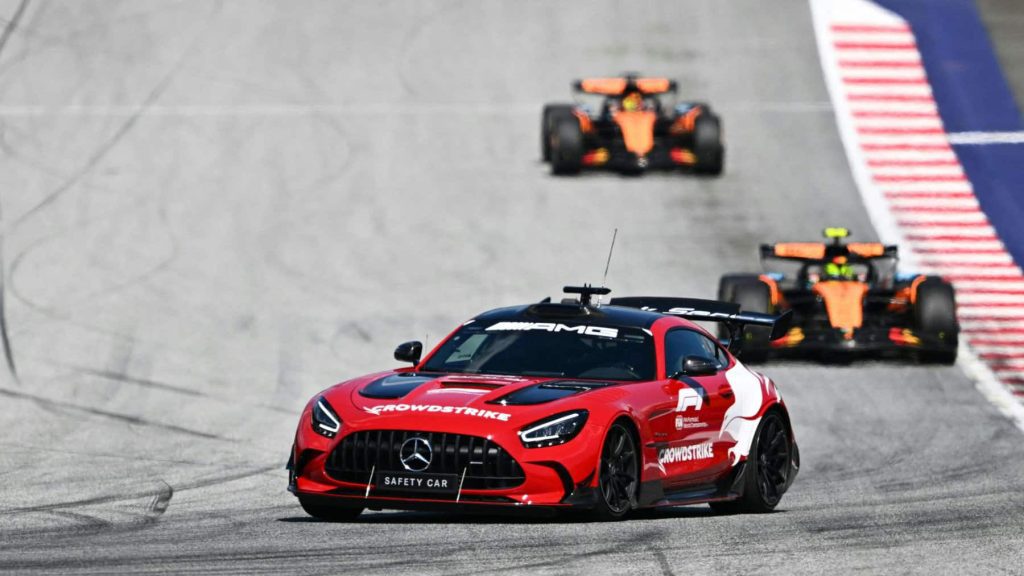Formula 1 garners attention for its speed and advanced technology, but underlying the thrilling events is a meticulously orchestrated system dedicated to the safety of drivers, marshals, and fans.
The safety car is a pivotal element of this safety framework.
Although it may not receive the same recognition as the racing cars, the safety car is essential in managing the pace during perilous situations, along with some intriguing facts and anecdotes surrounding it.
In this exploration, we delve into everything you need to know about the F1 safety car and its vital function in ensuring the safety of Formula 1 races.
What is the F1 safety car?
The Formula 1 safety car is a high-performance vehicle specifically modified to control the speed of F1 cars during emergencies, accidents, or unsafe conditions on the track.
During its deployment, the race cars form a single line behind the safety car, with overtaking prohibited. This arrangement allows marshals to safely clear the track, usually to remove debris or assist damaged vehicles, while maintaining the order of drivers for a swift return to racing.
The safety car is also utilized at the beginning of races when track conditions are deemed too hazardous, often due to wet weather and reduced visibility.
What is the Virtual Safety Car?
Aside from deploying a physical car, F1 race directors can initiate a Virtual Safety Car period where trackside electronic boards display the initials VSC.
Drivers must significantly reduce their speed, and their dashboards indicate if they are within the limit. This approach is typically reserved for less severe incidents as it preserves the gaps between drivers, minimizing disruption to the race. However, since cars are not bunched up, marshals often don’t have the opportunity to work on a clear track for extended periods.
When was the safety car introduced in F1?
The first instance of a safety car in Formula 1 took place at the 1973 Canadian Grand Prix. Due to treacherous weather, officials sent out a lemon-yellow Porsche 914, driven by Canadian racer Eppie Wietzes.
This deployment was fraught with difficulties, as the safety car mistakenly positioned itself ahead of the wrong driver, leading to confusion regarding the race order and complicating the identification of the actual winner.
It took several hours post-race to officially declare Peter Revson as the winner, marking the inception of the safety car’s role in race safety — a concept that became more standardized with formal guidelines starting in 1993.
How does the safety car work?
When an incident occurs on the track, race control activates the safety car, which enters the circuit at a designated location.
F1 drivers are shown yellow flags and illuminated ‘SC’ signals, indicating that they must not overtake. The safety car leads the drivers in a single-file line at a controlled speed, enabling marshals to operate safely.
Once the on-track situation is resolved, the safety car returns to the pits, allowing the race to resume with a green signal.
Who drives the safety car?
Since 2000, the primary driver of the safety car has been Bernd Mayländer, a former professional German racer.
He works alongside a co-driver responsible for managing communications and operations, remaining on standby throughout the race to respond immediately to any incidents.
What cars are used as the safety car?
Starting with the 2021 season, two cars share the safety responsibilities: the Mercedes-AMG GT Black Series and the Aston Martin Vantage F1 Edition.
These vehicles are fitted with FIA-compliant electronic systems, additional screens, rear-view cameras, and specialized race management controls.



